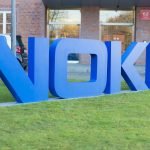
A new report has attempted to dive deep into the key capabilities of the three leading hyperscalers – and concluded Microsoft as the overall technical leader.
The report, from analyst firm Transforma Insights, puts the Redmond giant, a clear second in public cloud infrastructure market share, just ahead of market leader Amazon Web Services (AWS). Google ‘trails some distance’ behind the two leaders.
The assessment comes from Transforma’s ‘universal rating system’ for vendors across digital transformation. Vendors were assessed on enterprise requirements for capabilities such as hardware, software and systems integration across a family of technologies ranging from artificial intelligence (AI), to the Internet of Things (IoT), to edge computing.
Taking against the theoretical maximum score possible, Microsoft secured a rating of 52%, compared with 42% for AWS and 25% for Google.
When it came to specific technologies (below), AI, edge and IoT were understandably more advanced, with Microsoft being given the nod for AI and IoT, and AWS for edge. Human-machine interface and robotic process automation (RPA) were seen as significant wins for Microsoft.

“The message for enterprise adopters is that Microsoft overall is the lead vendor to support a digital transformation, but that hides quite a bit of diversity,” said report author Matt Hatton. “For early adopters looking for cutting-edge solutions, AWS is generally a step or two ahead of Microsoft. However, when it comes to breadth of offering and mass-market delivery, Microsoft is the clear lead.
“Google has some particular niche capabilities, and is often favoured by developers, particularly in AI, although it seems unable to translate that into mass market adoption,” Hatton added.
It is worth examining these findings against the benchmark of Gartner’s infrastructure as a service (IaaS) Magic Quadrant, which added platform as a service (PaaS) last year as the analyst firm argued it needed to reflect the ‘broad array of services’ hyperscalers offer beyond IaaS. AWS led from Microsoft, but complexity and a lower ratio of availability zones respectively were seen as the major weaknesses.
“AWS and Microsoft particularly perform well in ‘software products’, reflecting their heavy software focus and ability to deliver off-the-shelf products covered in the category,” added Hatton. “They also rate high for integrated solutions, application development and specialist services.”
According to the most recent figures available from Synergy Research, AWS holds 32% of the cloud infrastructure services market, with Microsoft at 20% and Google 9%.
You can download the full report here (client access required).
Photo by Florian Schmetz on Unsplash

Want to find out more about topics like this from industry thought leaders? The Cloud Transformation Congress, taking place on 13 July 2021, is a virtual event and conference focusing on how to enable digital transformation with the power of cloud.






